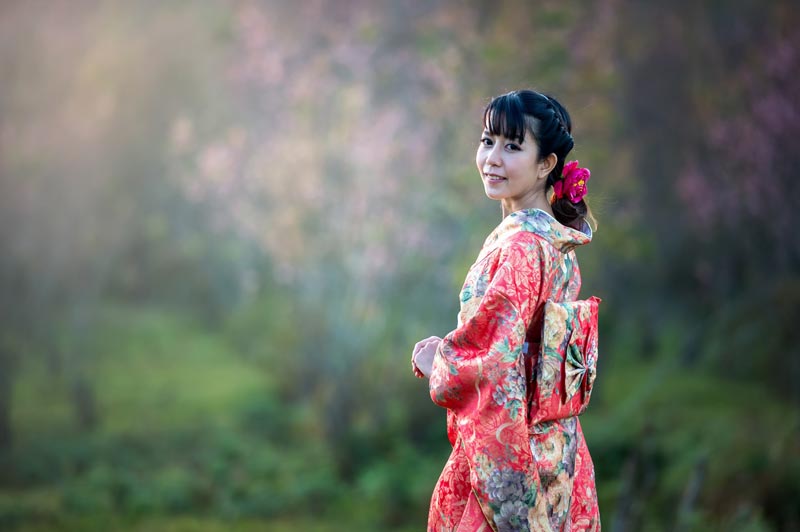How much do you know about Korean wedding traditions?
Marriage is one of the most important and memorable times of one’s life. Each country has its set of traditions to celebrate matrimony. Many of these traditions claim to bring good fortune to the lives of the couple.
For example, Indian brides get intricate paintings of mehndi on their skin. Newly-wedded German couples would saw logs in half to test their strength.
Ever wondered what Korean wedding traditions look like? Here are some fun facts about a traditional Korean wedding that you may not know about. Read on to discover more about traditional Korean weddings.
Korean Pre-Wedding Traditions
Korean weddings were not only considered a union between two people. When you wed two people in Korea, you also unite their families. Before the wedding, there are some Korean traditions that a couple must do.
Proposal
Contrary to popular belief, Korean couples do not propose a big ring and get down on one knee. Both parties plan for a Korean marriage per the traditions passed down.
Engagement rings are not as popular in a traditional Korean wedding. The bride opts whether or not to wear the ring after the wedding.
The couple may also choose to skip wedding rings. However, many younger Korean couples are picking up on mainstream customs.
Meeting the Family
The two families must meet before the couple announces their engagement. This meeting could be an awkward formal introduction in a private room. However, both families expect each other to have researched the other family.
It is a good sign for the family to agree to meet each other in the first place. It may be more common in the U.S to introduce your significant others in the early stages of your relationship. However, in Korea, the parents will not meet any significant others.
The only one they meet should be the last one. If your spouse introduces you to the parents, they may be preparing for a life with you.
Betrothal
One of the most popular Korean wedding traditions includes betrothal gifts. Generally, the groom’s closest friends would bring gifts to the bride’s home. They place the gifts in a ‘Hahm,’ a box to hold the items.
The group would arrive at the bride’s home. They would sing while dressed in costumes with blackened faces.
The bride’s family goes out to meet the band and offer them money. The bearers would accept bribes and negotiations until they deliver the last Hahm.
Engagement Parties
Many Korean-American couples hold their engagement parties in restaurants. Families exchange gifts, often worth $30 thousand to $40 thousand. During the engagement parties, both families can introduce themselves formally.
The bride can wear a special engagement dress, often referred to as a Hanbok. Entertainment is an integral part of Korean engagement parties. The family members can sing along to karaoke or listen to classical Korean music.
A Wild Goose
Part of Korean wedding traditions before the ceremony is a wild goose. The groom would give the bride’s mother a Kireogi, as a gift. The Korean wedding ducks tradition, called Jeonanyre, calls for the groom to capture a live wild goose.
In modern Korean wedding traditions, a wooden goose replaces the traditional live goose. Wild geese mate for life, and it is a respected symbol of structure and harmony. Presenting a wild goose to the bride’s mother will symbolize the groom’s lifelong commitment.
Before presenting the Kireogi to the bride’s mother, he must first bow twice. The gift of a wild goose is the groom’s promise to the bride’s mother to take care of her daughter for life.
Korean Wedding Ceremony
Korean wedding ceremonies have their own set of particular traditions. Here are some of the customs you may experience if you are invited to a Korean wedding.
A Gourd of Wine
Many Korean couples hold traditional weddings in the bride’s family home. Couples take their vows in a ceremony called Kunbere. During Kunbere, the groom and bride bow to each other.
Then, they seal their vow by drinking a special wine. This wine comes in a gourd, often grown by the bride’s mother.
Dates and Chestnuts
A few days after the first wedding ceremony, the couple celebrates a second time visiting the man’s family. Koreans call this p’ye-baek. The bride offers dates and chestnuts to the groom’s parents as a symbol of children.
They sit at a table covered with offerings. In return, the parents will offer sake. They’ll then toss both the dates and chestnuts at the bride.
The bride will try to catch them in her wedding skirt. P’ye-baek is often a family-only affair. Other family members can offer money gifts in white envelopes.
Attire
The bride and groom wear specific colors during their wedding. The bride wears red, and the groom wears blue. These colors symbolize the yin and yang, blue for healing and relaxation.
Red symbolizes active energy and enthusiasm. The bride gets red coin-sized dots painted on her cheeks. This tradition helps to ward off evil spirits.
The mothers wear specific colors to symbolize their relationship with the couple. The groom’s mother wears a light-blue hanbok, specially made for the wedding ceremony. The bride’s mother wears pink, purple, or another similar color.
Other wedding guests may also choose to wear Hanbok. In America, it is common for wedding guests to wear modern or non-traditional attire for the ceremony.
The Wedding Banquet
A Korean wedding banquet can be simple, offering only noodle soup. Koreans refer to the wedding banquet as kook soo sang. This term means “noodle banquet.”
Long noodles, boiled in beef broth and vegetables, symbolize a long and happy life. Many Korean events, and especially weddings, serve a sticky rice cake called Dok.
Stay True To These Korean Wedding Traditions
Now you know what Korean wedding traditions look like. From wooden wild geese to dates and chestnuts, here are some fun facts. Learn more about traditional Korean weddings and customs today!
Thank you for reading our article! Want to learn more about wedding customs around the globe? Contact us today!

